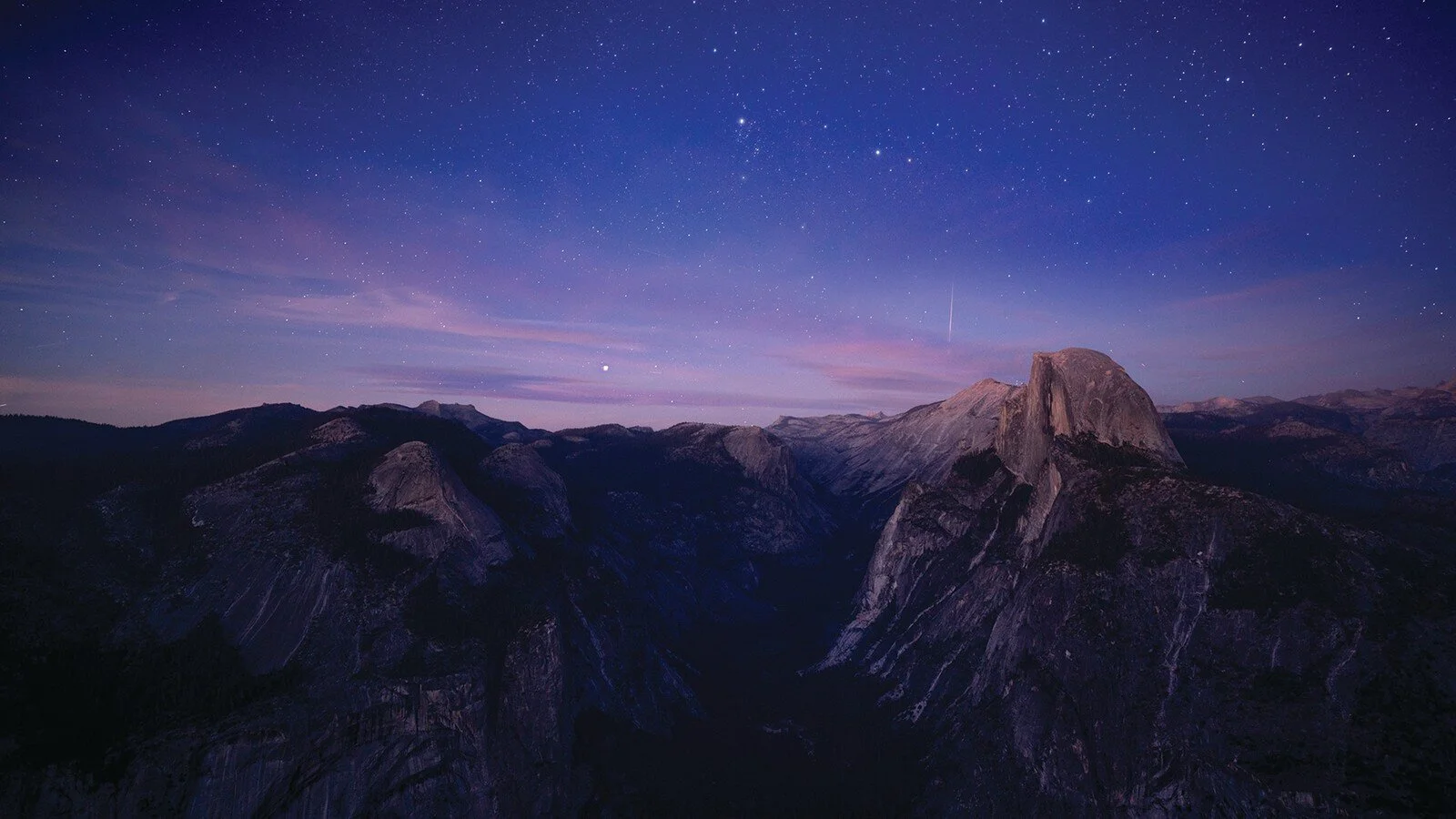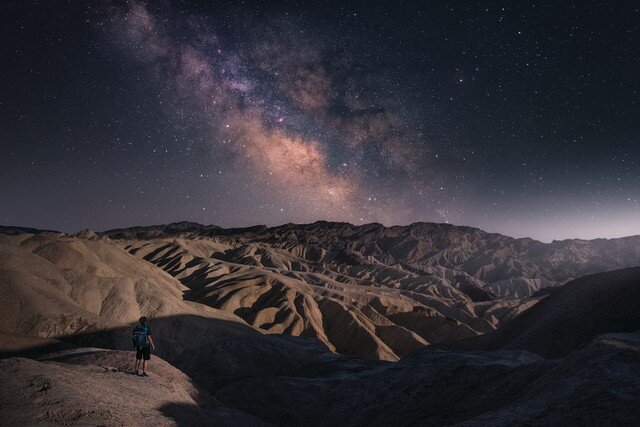Starry-Eyed Destinations
Starry-Eyed Destinations
The World’s Best Stargazing Spots Are Sure to Impress
With a never-ending supply of technological advancements and screens seemingly around every turn, modern life often pulls people away from nature. Fortunately, looking up at the stars never ceases to amaze, especially when a postcard-perfect backdrop and ideal conditions are combined with world-class stargazing facilities.
From remote desert moonscapes to exotic islands, these are the best places on the planet for catching views of galaxies far, far away.
NAMIBIA
Home to the large, arid Namib Desert, windswept Namibia is one of the least densely populated countries on Earth. To get to the remote corner of southern Africa for the perfect spot is a long journey through mesmerizing dunes and rocky outcrops.
When the International Dark-Sky Association, the world’s leading authority recognizing places for their sky quality, formed in 1988, the first reserve to achieve the highest gold-tier status was the NamibRand Nature Reserve, a dazzling, isolated wilderness of rust-colored dunes and sandy plains framed by the Nubib Mountains. Watching the stars sparkling above sand dunes and mountains, accompanied by the occasional animal chorus, guarantees an unforgettable experience.
The mountains meet the sky at Yosemite Village.
CALIFORNIA
No U.S. state offers the variety of stargazing opportunities like California. Most notable is Death Valley National Park, a gold-tier International Dark Sky Park where the Milky Way can be spotted with the naked eye. (Only the neon glow of Las Vegas, some 100 miles away, prevents the skies from being even darker.)
A standout among the few lodging options within the massive, 3.4 million-acre park, The Oasis at Death Valley has taken measures to minimize light pollution in the area, providing a great home base for amateur astronomers.
Palm Springs, where several upscale resorts incorporate stargazing into their guest activities, is in close proximity to two International Dark Sky Parks: Joshua Tree National Park and Borrego Springs. Visitors can also enjoy the Rancho Mirage Observatory, which opened in 2018 as the rare observatory built specifically for public use.
Meanwhile, as one of the least visited and darkest national parks, Channel Islands National Park enjoys exceptionally low levels of light pollution from its position off the Southern California coast. The few visitors who make the trek and stay past sundown are rewarded with astounding stargazing opportunities.
In Northern California, Mount Shasta serves as a beacon for stargazers. The intrepid head to rugged Siskiyou County to drive 8,000 feet up—more than halfway to the summit—to appreciate the outdoors after dark. Local outfitters offer nighttime guided stargazing and spiritual hikes, while winter brings custom moonlight snowshoe adventures and the opportunity to ski under the stars at Mt. Shasta Ski Park.
Nearby in the Shasta Cascade region, the city of Redding attracts stargazers thanks to its proximity to Lassen Volcanic National Park, one of the world’s few locations where you can find all four types of volcanoes. The park offers starry-night ranger-led programs as well as the Lassen Dark Sky Festival, a free two-day astronomy festival usually held annually in August, featuring constellation tours, solar scope viewing, and live demonstrations.
Among the state’s myriad destinations for stargazing, none is as famous as the area around Yosemite National Park and the surrounding Mariposa County. Every year around late July or August, stargazers flock to Glacier Point on the south wall of Yosemite Valley to witness the Perseid meteor shower, when stars appear to rain down from the heavens. While summertime visitors to Yosemite take advantage of the multiple star-watching activities offered nightly, others decamp to the Ahwahnee Meadow or El Capitan Meadow, where sheer granite cliffs paint a dramatic landscape against the starry night sky.
The otherworldly nightscape at Mount Shasta in Northern California.
TENERIFE
Tenerife, the largest and most populated of the Canaries, is often lauded for its stargazing opportunities. The exceptionally clear and dark skies can be explained by the remote island’s high altitude, proximity to the equator, and distance from tropical storms, not to mention a law restricting flight paths in order to protect stargazing conditions.
Since 1964, the Teide Observatory has been an international hub for solar astronomy from its perch atop its namesake volcano. Teams have arrived from around the world to make new discoveries about the sun using the observatory’s sophisticated telescopes, and fledgling astronomers can enjoy guided observatory tours where guides point out constellations from both hemispheres, meteor showers, and the Summer Triangle. Casual types need only to take a cable car to the top of Mount Teide (Spain’s highest peak) for evening stargazing.
HAWAII
At Hawaii’s Mauna Kea, the tallest point in the state, 13 huge telescopes, including the world’s largest optical telescope, occupy the summit of the dormant volcano, where scientists detect light from distant galaxies thanks to the altitude, clean air, low humidity, and lack of light pollution. Between sunrise and sunset, visitors make the two-hour drive to the 13,796-foot summit to brave the elements and low oxygen levels. Situated at a more manageable 9,200 feet, the well-equipped visitor info center offers free lectures, Q&As, and a chance to peer through 11-, 14-, and 16-inch telescopes.
An astronomical observatory allows you to see the sights from Mauna Kea in Hawaii.
NEW ZEALAND
With its remote locale and clear skies, the “land of the long white cloud” has long been a mecca for stargazers, particularly the area around the Aoraki Mount Cook National Park on the rugged South Island. One of the world’s largest and most accessible Dark Sky Reserves is found at the Mackenzie Basin, a high-country plateau ringed entirely by mountains from which the Magellanic Clouds and distant dwarf galaxies are visible year-round. The glacial Lake Tekapo is home to the Dark Sky Reserve, a self-proclaimed leader in astrotourism offering a plethora of stargazing activities, including a mountaintop stargazing experience at the world-renowned Mount John Observatory.
The North Island also receives a steady stream of stargazers, many of whom trek to Helena Bay on the remote northeastern coast. There, Helena Bay Lodge offers 800 acres of scenic greenery, four private beaches, and unobstructed views of the night sky.
At Lassen Volcanic National Park, bottom, a telescope transports you to a celestial adventure.
NEW MEXICO
The desert landscape of the American Southwest has long appealed to amateur sky watchers. Located just outside of Albuquerque, the prehistoric Puebloan place of mystery known as Chaco Culture National Historical Park lets visitors experience the same dark skies the Chacoans observed 1,000 years ago. More than 99% of the park is designated as a natural darkness zone with no permanent outdoor lighting, ensuring the preservation of nocturnal ecosystems. Visitors to Chaco Canyon encounter many solstice and equinox markers, a reminder of how the Chacoans incorporated celestial movements into their architecture, art, and culture.
The Milky Way is in full view at Death Valley in California.






